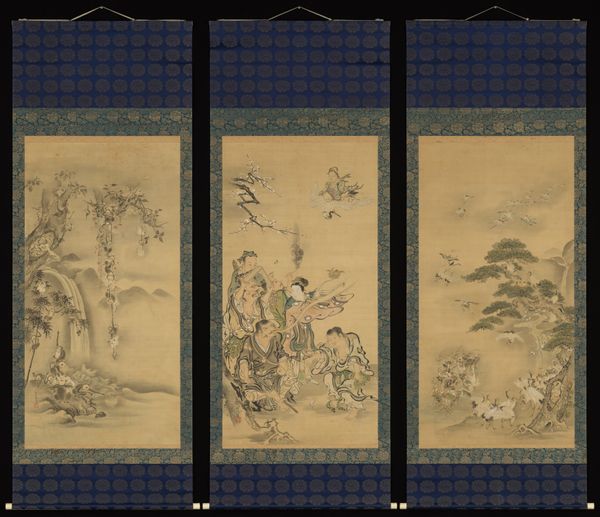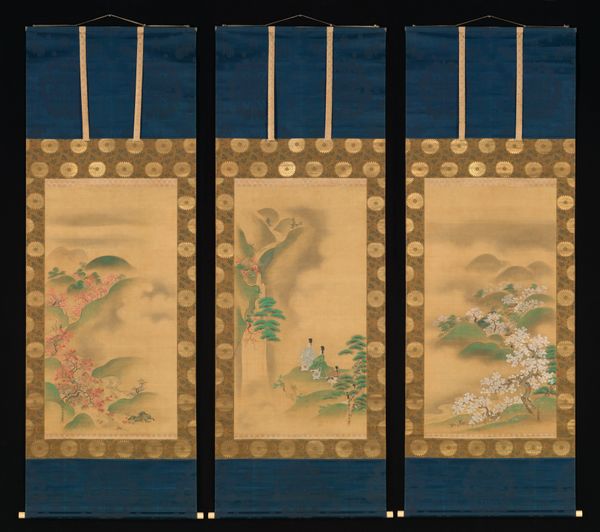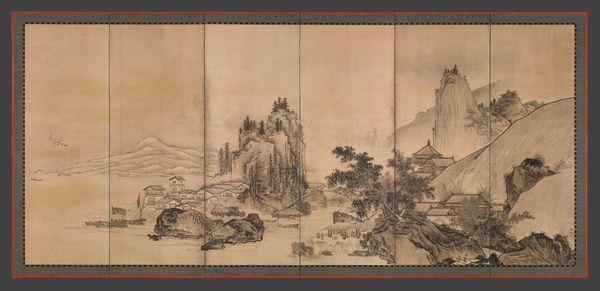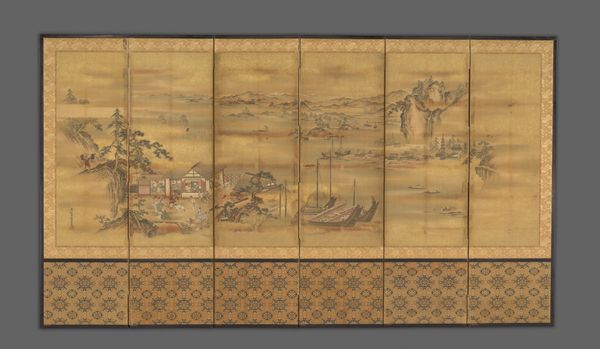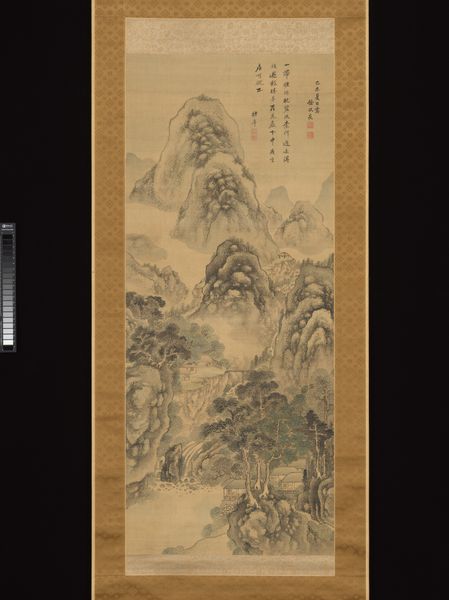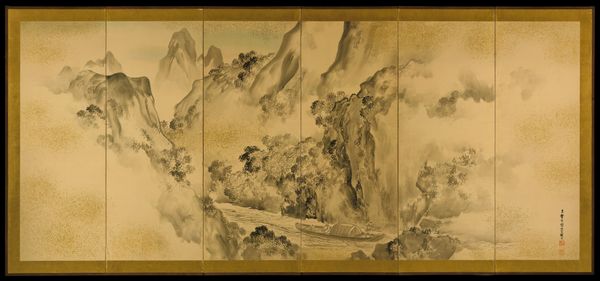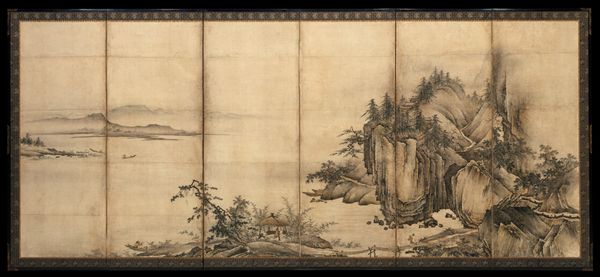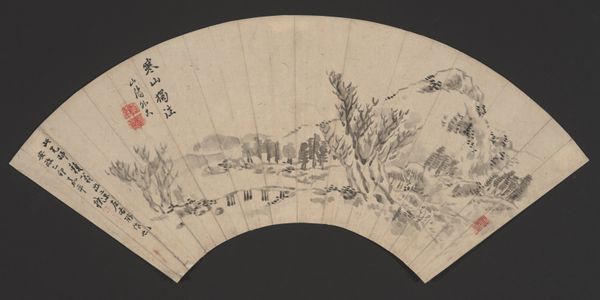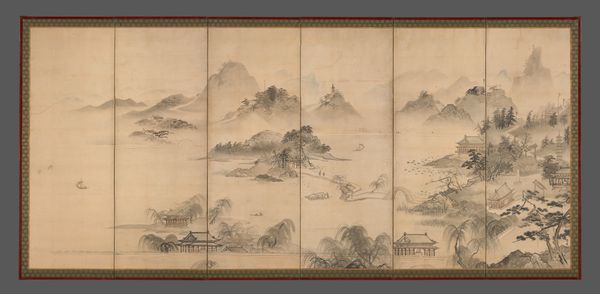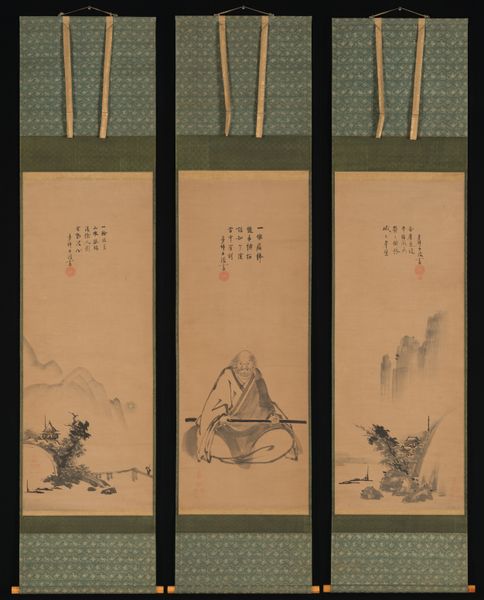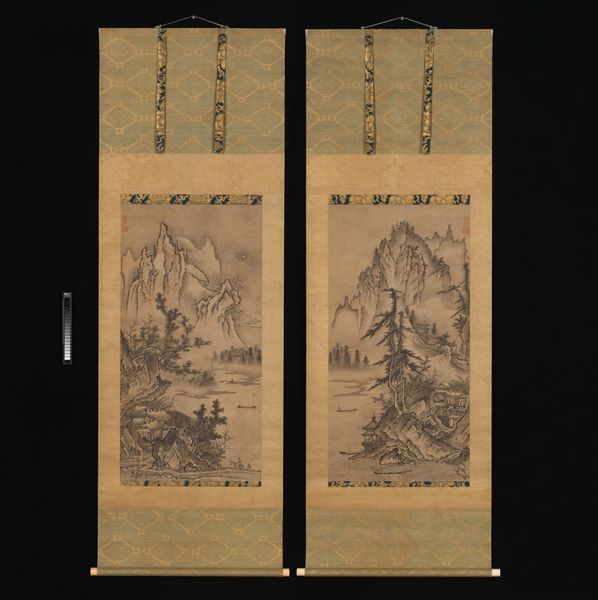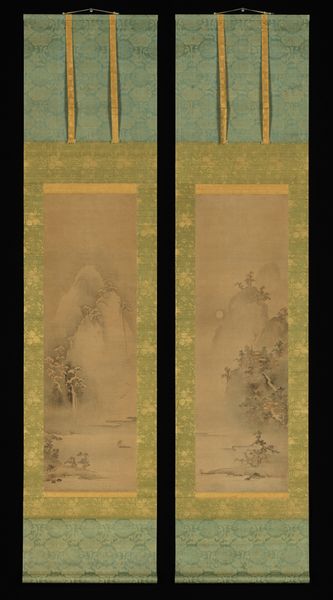
tempera, painting, ink
#
tempera
#
painting
#
asian-art
#
landscape
#
ink
#
orientalism
Dimensions: Image (a): 40 3/8 × 13 7/8 in. (102.6 × 35.2 cm) Overall with mounting (a): 75 1/16 × 19 3/4 in. (190.7 × 50.1 cm) Overall with knobs (a): 75 1/16 × 21 5/8 in. (190.7 × 55 cm) Image (b): 40 3/8 × 13 7/8 in. (102.6 × 35.3 cm) Overall with mounting (b): 75 1/4 × 19 11/16 in. (191.2 × 50 cm) Overall with knobs (b): 75 1/4 × 21 11/16 in. (191.2 × 55.1 cm) Image (c): 40 7/16 × 13 7/8 in. (102.7 × 35.3 cm) Overall with mounting (c): 75 1/16 × 19 3/4 in. (190.6 × 50.1 cm) Overall with knobs (c): 75 1/16 × 21 3/4 in. (190.6 × 55.3 cm) Image (d): 40 1/2 × 13 15/16 in. (102.8 × 35.4 cm) Overall with mounting (d): 75 3/8 × 19 11/16 in. (191.5 × 50 cm) Overall with knobs (d): 75 3/8 × 21 11/16 in. (191.5 × 55.1 cm)
Copyright: Public Domain
Editor: Here we have Yamamoto Baiitsu’s "Landscapes of the Four Seasons," from the 18th or 19th century, a set of four tempera and ink paintings. Looking at them, I’m immediately struck by their tranquility and subtle variations across the seasons. How do you interpret this work, especially in terms of its historical context? Curator: That's a great initial observation. These screen paintings are less about pure landscape and more about cultural projection, fitting into the broader interest in "Orientalism". Think about the elite art world; What function might these serve hanging in the home of a wealthy merchant or government official? Editor: Hmm, as status symbols, perhaps? Evidence of having refined tastes and the leisure time to appreciate them? Curator: Exactly. These landscapes tap into pre-existing cultural capital associated with traditional literati painting. The muted tones and familiar landscape motifs are referencing centuries of established artistic styles. How might this affect a viewer's perception, do you think? Editor: Well, I suppose that they provide a sense of legitimacy, tying the patron into a historical lineage of cultural appreciation. It's less about the landscapes themselves, then, and more about the status they confer? Curator: Precisely. The paintings' social function is as much a part of their meaning as the brushstrokes and composition themselves. Consider how museums themselves now play a role in continuing to validate and preserve these historical connotations! Editor: That's fascinating. I’d never considered that a landscape could function as a political statement, highlighting connections between art, social status, and even the role of institutions. Curator: It reveals how the past continues to shape the present and vice-versa.
Comments
No comments
Be the first to comment and join the conversation on the ultimate creative platform.

